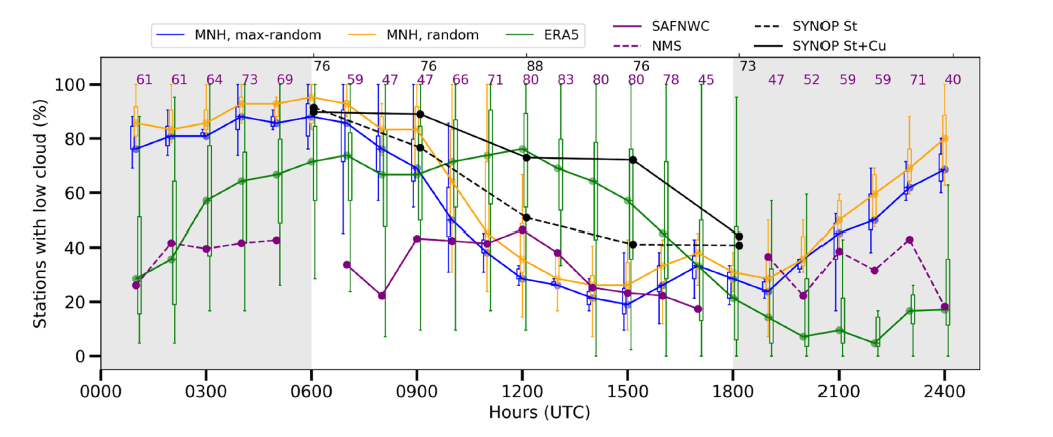Berger et al (2025)
Berger, A. et al (2025) The dry-season low-level cloud cover over western equatorial Africa: A case study with a mesoscale atmospheric model. Quaterly. J. Roy. Met. Society.
Article in Open Access at : https://rmets.onlinelibrary.wiley.com/doi/full/10.1002/qj.4962
Abstract :
A persistent low-level cloud cover (LCC) is a major climatic feature of western equatorial Africa during the long dry season (June–September). We investigate the ability of the mesoscale atmospheric model Meso-NH at 2-km horizontal grid spacing, forced by ERA5 reanalysis data, to simulate the LCC features. We chose a six-day period in June 2008, presenting temporal changes in cloud cover, to better understand the atmospheric mechanism associated with the LCC formation. The main meteorological variables of the model are firstly validated extensively against tri-hourly station data and ERA5. The LCC diurnal cycle shows an early-morning maximum consistent with station data, then a decrease in the afternoon which matches the evolution of the stratiform cloud cover, but some of the transition to cumulus clouds is missed. Discrepancies are found with respect to satellite data, but the latter have issues of reliability. Over the ocean, Meso-NH overestimates the LCC compared to satellite data, while ERA5 underestimates it. Over land, Meso-NH enabled the depiction of subregionally coherent LCC dynamics in relatively good agreement with observations, though discrepancies often occurred on individual days. This result does not depend on methodological issues such as the cloud overlap assumption or the low-level cloud fraction threshold retained to define cloudy observations. Dynamical analysis suggested that local and regional-scale wind direction changes, related to the synoptic weather pattern, are key to the maintenance or clear-up of the
LCC in the afternoon. The LCC persistence is associated with surface westerlies advecting cooler maritime air increasing the lower-tropospheric stability. Moreover, the moistening of the top of the Planetary Boundary Layer promotes the formation of the LCC. These local atmospheric changes are driven by a mid-tropospheric easterly wave further north, a weakening of the Kalahari High over southern Africa and the weakening of the transequatorial flow.
Updated on 1 July 2025




